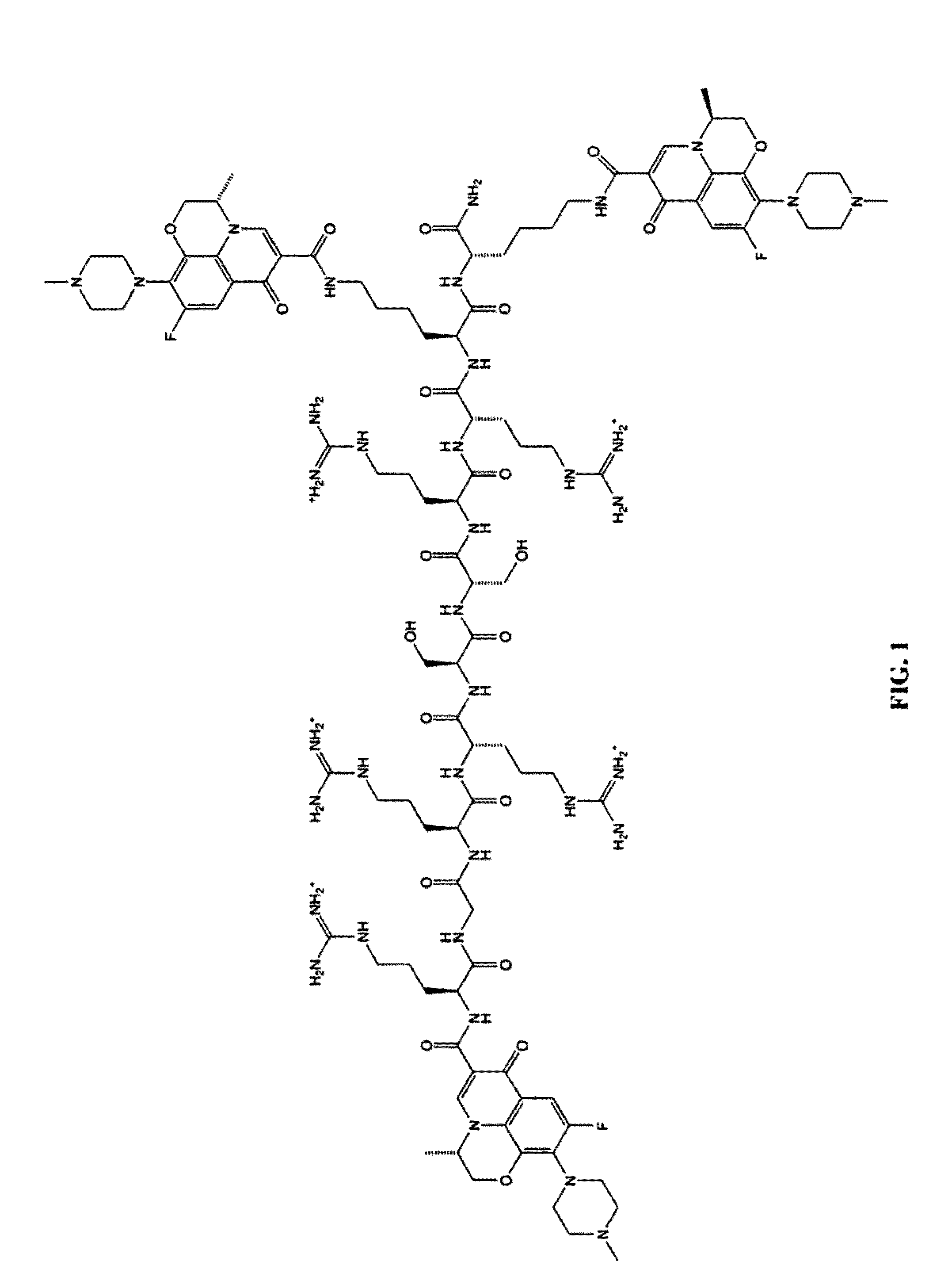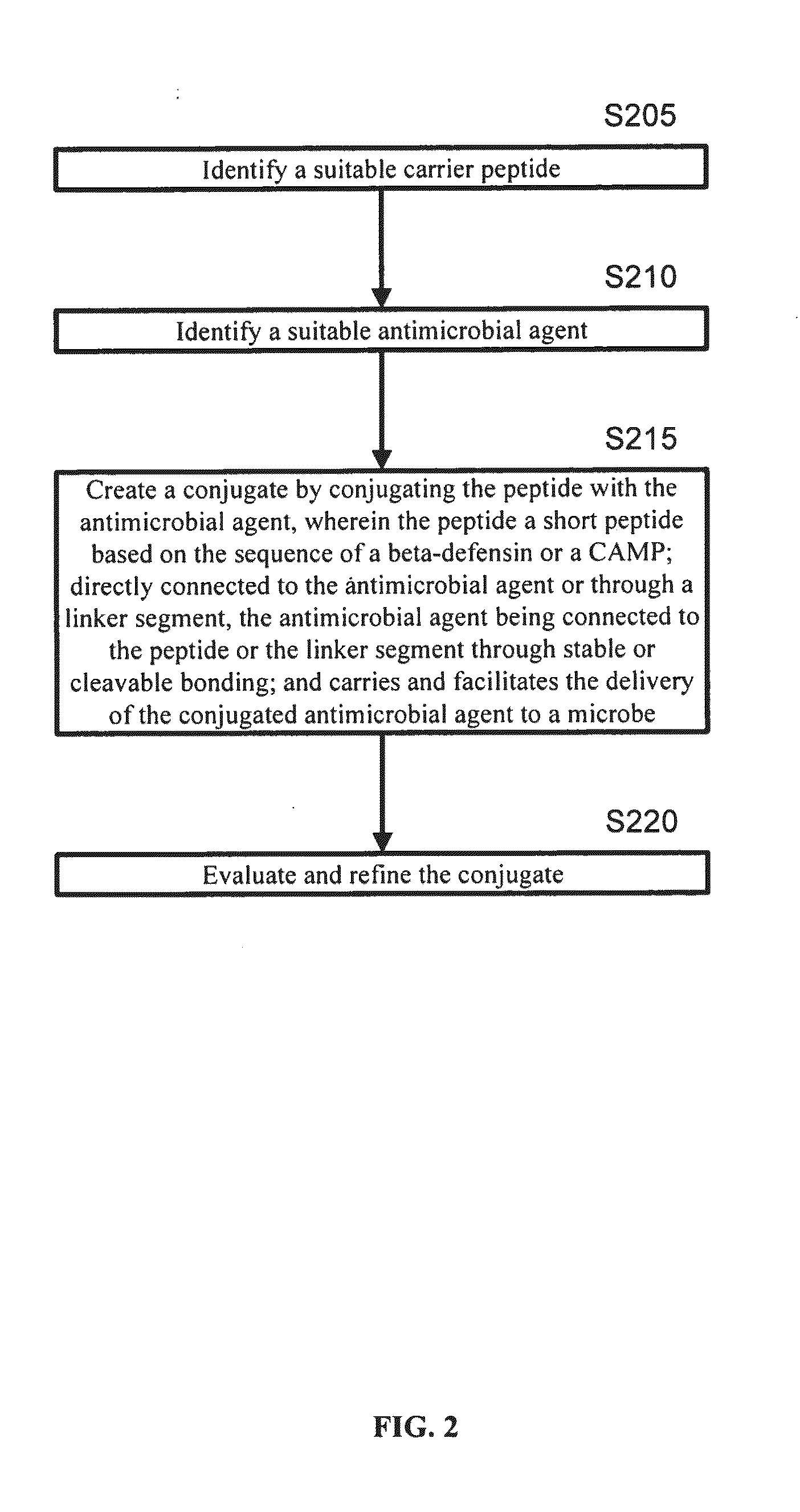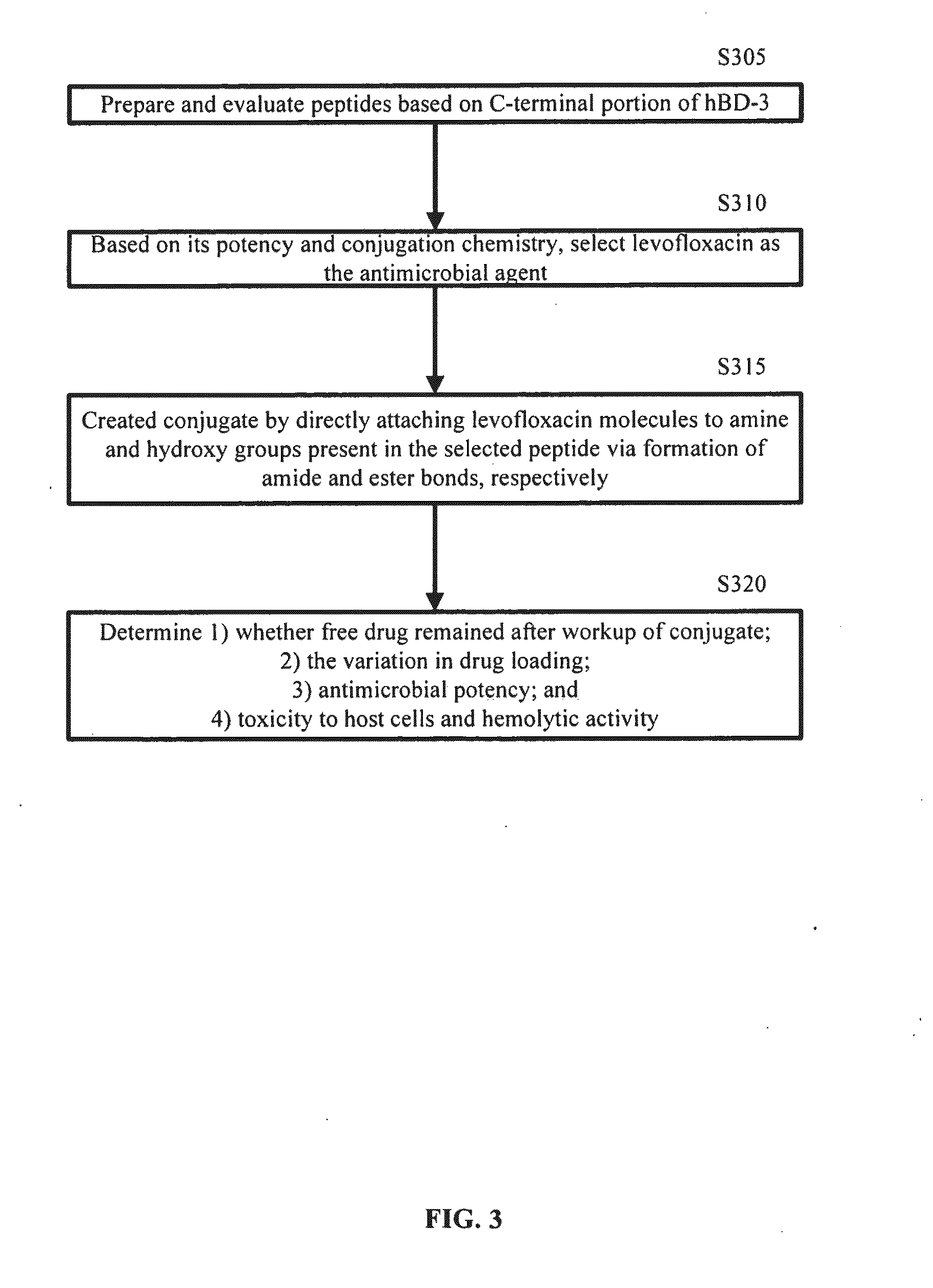Targeted delivery of antimicrobial agents
a technology for antimicrobial agents and targeted delivery, which is applied in the direction of peptides, peptide/protein ingredients, peptide sources, etc., can solve the problems of antibiotic resistance, major problem, and community-acquired infections,
- Summary
- Abstract
- Description
- Claims
- Application Information
AI Technical Summary
Benefits of technology
Problems solved by technology
Method used
Image
Examples
Embodiment Construction
[0035]The present invention relates to developing novel strategies for leveraging the therapeutic potential of cationic antimicrobial peptides (CAMPs), such as targeted delivery of antimicrobials.
[0036]Historically, antibiotics have been chosen based on their selective toxicity. However, many compounds with potent antimicrobial activity are not suitable for use as therapeutics due to undesirable side effects or poor selective toxicity. As a way around this problem, targeted delivery may allow the use of normally unsuitable antimicrobial agents by reducing their adverse side effects. Although a diverse range of strategies for the targeted delivery of therapeutics has been explored for the selective delivery of chemotherapeutics to cancerous cells, they have only recently been investigated for the treatment of infectious diseases.
[0037]Many of the properties that make antimicrobial peptides an effective defensive mechanism in higher organisms can also make them ideally suited as a pla...
PUM
 Login to View More
Login to View More Abstract
Description
Claims
Application Information
 Login to View More
Login to View More - R&D
- Intellectual Property
- Life Sciences
- Materials
- Tech Scout
- Unparalleled Data Quality
- Higher Quality Content
- 60% Fewer Hallucinations
Browse by: Latest US Patents, China's latest patents, Technical Efficacy Thesaurus, Application Domain, Technology Topic, Popular Technical Reports.
© 2025 PatSnap. All rights reserved.Legal|Privacy policy|Modern Slavery Act Transparency Statement|Sitemap|About US| Contact US: help@patsnap.com



